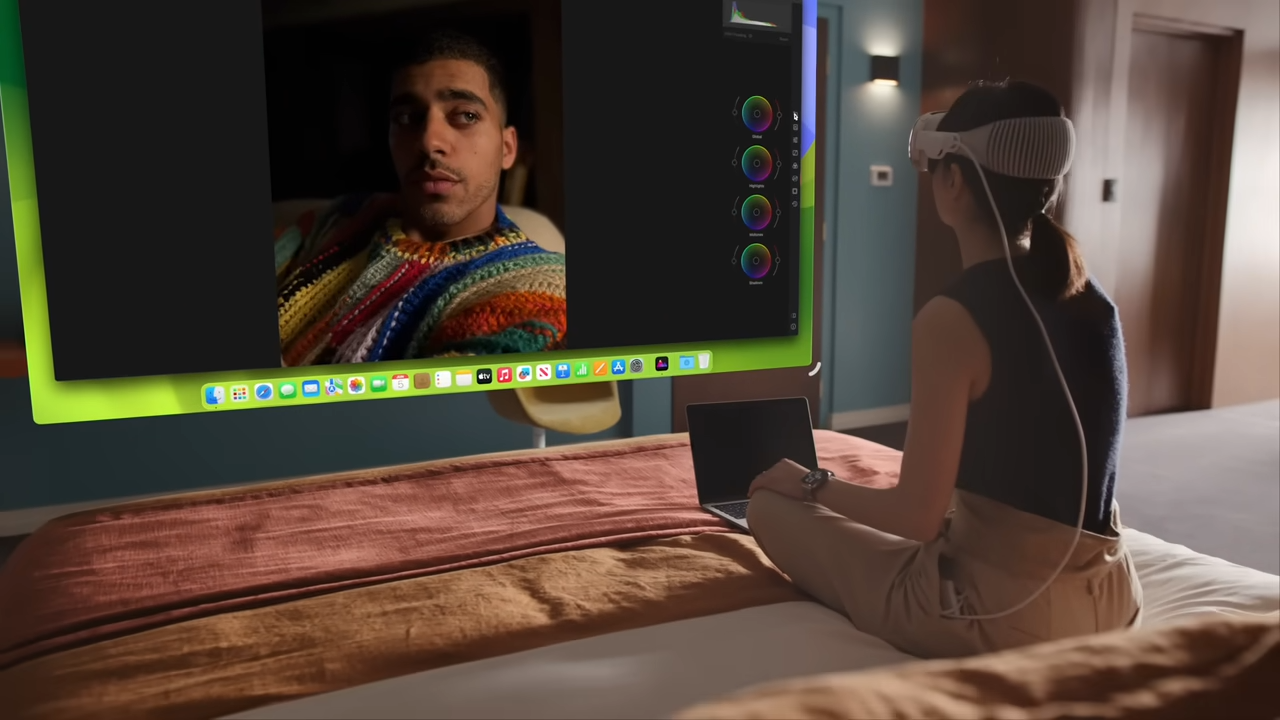Apple Vision Pro confusion reigns over which Macs can display their desktops in a spatial environment — here's what Apple says
Will it work, or won't it?

After months of waiting, it's finally here. Vision Pro is on sale at Apple Stores across the United States and we're continuing to learn more and more about the headset. Apple announced the spatial computer back in June of last year and then almost immediately went quiet. As we've gotten closer to today's launch date we've started to hear more about the headset, what it can do, and how it works. But even as people spend more time with Apple's new product there are still some questions and confusion, specifically surrounding one of its coolest features.
That feature is the ability to take a Mac's desktop and throw it onto the Vision Pro, allowing it to be interacted with via a huge virtual display. That display is much, much larger than any Mac that Apple has ever shipped and users can use a keyboard and trackpad if they like, too. It seems like the perfect way to get some work done, especially if you're normally restricted in terms of space. But while Apple's promotional videos and photos all showed someone using a MacBook of some sort, we all assumed that the feature would work with all Macs.
But will it? YouTuber Brian Tong suggested not in a new video that details the Vision Pro's settings, and he even backed that up in the comments when questioned. It's a limitation that seems odd on the face of it, but Apple's own documentation suggests other Macs should work just fine.
Are you sure?
In Tong's YouTube video, embedded below, we're told that only Apple's portable Macs will work with the Vision Pro with no clear explanation as to why. We have to assume that Apple said that was the case, but it always seemed strange. And with so few people with a Vision Pro to hand, it was difficult to know for sure.
Thankfully, Apple's documentation suggests that desktop Macs like the iMac and Mac Studio will work just fine.
"If you have a compatible Mac laptop nearby, you can bring its display into Apple Vision Pro by looking at it," the support document explains. It then goes on to say that people should make sure that their Mac laptop is open and the display is active.
That isn't great news for desktop Mac owners, but the support document continues and the news gets better pretty quickly indeed.
Master your iPhone in minutes
iMore offers spot-on advice and guidance from our team of experts, with decades of Apple device experience to lean on. Learn more with iMore!
"If you have a compatible Mac desktop computer, or you don’t see the Connect button above your Mac laptop, you can start Mac Virtual Display in Control Center," it says, before outlining exactly how that can be done.
So there we have it, all Apple Macs with M-series chips are good to go so long as they are running macOS 14 Sonoma and later. And if you're having issues, you should head into Control Center to get your Mac Virtual Display up and running.
That's great news for those who don't want to have to rush out and buy a new laptop just to enjoy one of the standout Vision Pro features. Especially having just spent at least $3,499 on the headset, too. We're told that Apple is working on a cheaper Vision Pro, thankfully, but it's currently unclear when that will ship or how much it will cost when it does.
More from iMore

Oliver Haslam has written about Apple and the wider technology business for more than a decade with bylines on How-To Geek, PC Mag, iDownloadBlog, and many more. He has also been published in print for Macworld, including cover stories. At iMore, Oliver is involved in daily news coverage and, not being short of opinions, has been known to 'explain' those thoughts in more detail, too. Having grown up using PCs and spending far too much money on graphics card and flashy RAM, Oliver switched to the Mac with a G5 iMac and hasn't looked back. Since then he's seen the growth of the smartphone world, backed by iPhone, and new product categories come and go. Current expertise includes iOS, macOS, streaming services, and pretty much anything that has a battery or plugs into a wall. Oliver also covers mobile gaming for iMore, with Apple Arcade a particular focus. He's been gaming since the Atari 2600 days and still struggles to comprehend the fact he can play console quality titles on his pocket computer.
